International Steel Prices

Foreign vs Domestic HRC Price Update: U.S. Still High, But Gap Narrowing
Written by Brett Linton
December 2, 2021
Foreign steel prices continue to tempt U.S. buyers with potential discounts of 24-43% over domestic steel, according to Steel Market Update’s latest comparison of domestic and foreign hot rolled steel prices. Foreign hot rolled steel prices are now theoretically $430-761 per ton cheaper than domestic steel, after taking freight costs, trader margins and tariffs into consideration.
The following calculation is used by Steel Market Update to identify the theoretical spread between foreign hot rolled steel prices (delivered to U.S. ports) and domestic hot rolled coil prices (FOB domestic mills). This is only a “theoretical” calculation as freight costs, trader margins, and other costs can fluctuate, ultimately influencing the true market spread. This compares the SMU U.S. hot rolled weekly index to CRU hot rolled weekly indices for Germany, Italy, and Far East Asian ports.
![]() SMU includes a 25% import tariff effective on foreign prices after March 23, 2018. We then add $90 per ton to the foreign prices in consideration of freight costs, handling, trader margin, etc., to provide an approximate “CIF U.S. ports price” that can be compared against the SMU U.S. hot rolled price. Note that we do not include any antidumping (AD) or countervailing duties (CVD) in this analysis.
SMU includes a 25% import tariff effective on foreign prices after March 23, 2018. We then add $90 per ton to the foreign prices in consideration of freight costs, handling, trader margin, etc., to provide an approximate “CIF U.S. ports price” that can be compared against the SMU U.S. hot rolled price. Note that we do not include any antidumping (AD) or countervailing duties (CVD) in this analysis.
Far East Asian HRC (East and Southeast Ports)
As of Wednesday, Dec. 1, the CRU Far East Asian HRC price decreased $5 per ton to $735 per net ton ($810 per metric ton), down $50 from one month prior. Adding tariffs and import costs, the delivered price of Far East Asian HRC to the U.S. is $1,009 per ton. The latest SMU hot rolled price average is $1,770 per ton, down $10 from one week ago, and down $105 from one month prior. Therefore, U.S.-produced HRC theoretically is now $761 per ton more expensive than imported Far East Asian HRC, down from $766 last week, and down from $804 one month ago. The early-September spread of $847 was the largest theoretical spread between Far East Asian and domestic HRC prices in SMU’s four-year history. Prior to 2021, the previous record high was $183 per ton in March 2018.
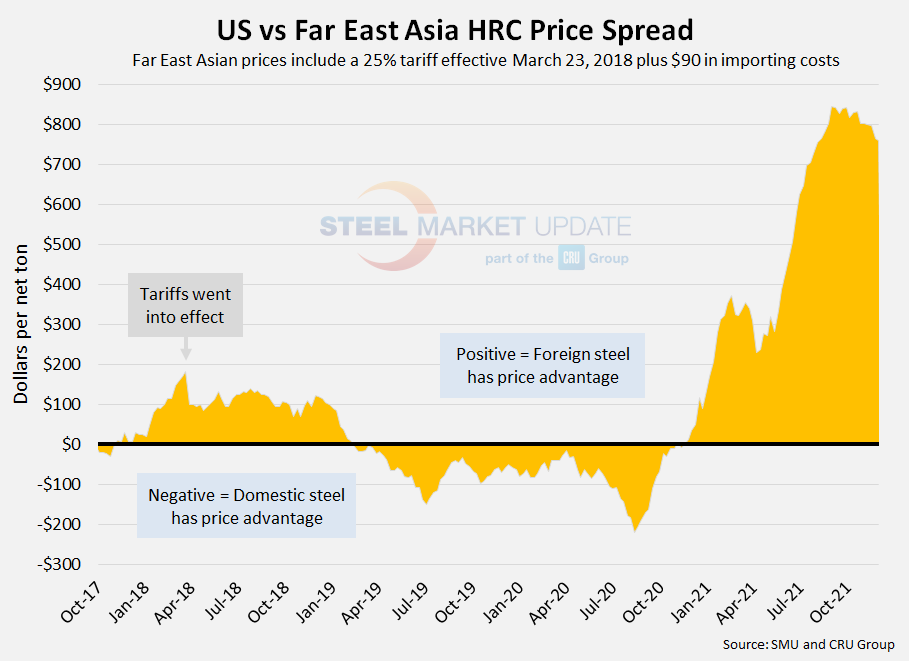
Italian HRC
CRU published Italian HRC prices at $930 per net ton ($1,025 per metric ton), up $4 from last week, but down $36 from one month ago. After adding tariffs and import costs, the delivered price of Italian HRC is approximately $1,253 per ton. Accordingly, domestic HRC is theoretically $517 per ton more expensive than imported Italian HRC, down from $532 the week prior, and down from $577 one month ago (which was the largest seen in our limited history). Prior to 2021, the previous record high was $143 per ton in July 2016. Recall that in late-May/early-June, Italian HRC briefly lost its price advantage over domestic steel for two weeks.
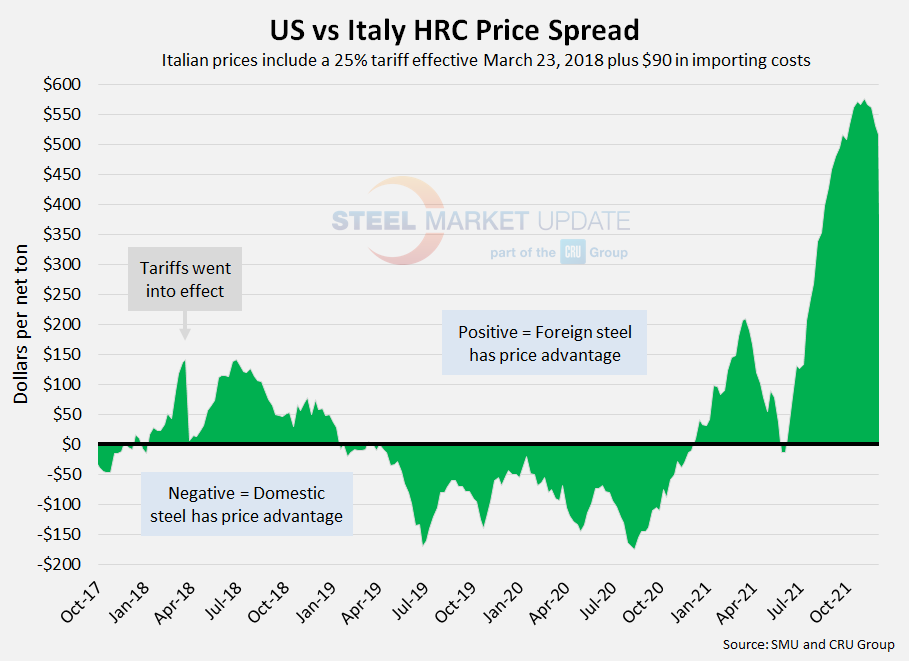
German HRC
The latest CRU German HRC price is $1,000 per net ton ($1,102 per metric ton), down $15 from last week and down $46 from one month ago. After adding tariffs and import costs, the delivered price of German HRC is approximately $1,340 per ton. Accordingly, domestic HRC is theoretically $430 per ton more expensive than imported German HRC, up from $422 last week, but down from $478 one month ago. The late-October spread of $504 was the largest seen in our limited history. Prior to 2021, the previous record high was $121 per ton in March 2018. Like Italian HRC, German HRC briefly lost its price advantage over domestic steel for two weeks in late-May/early-June.
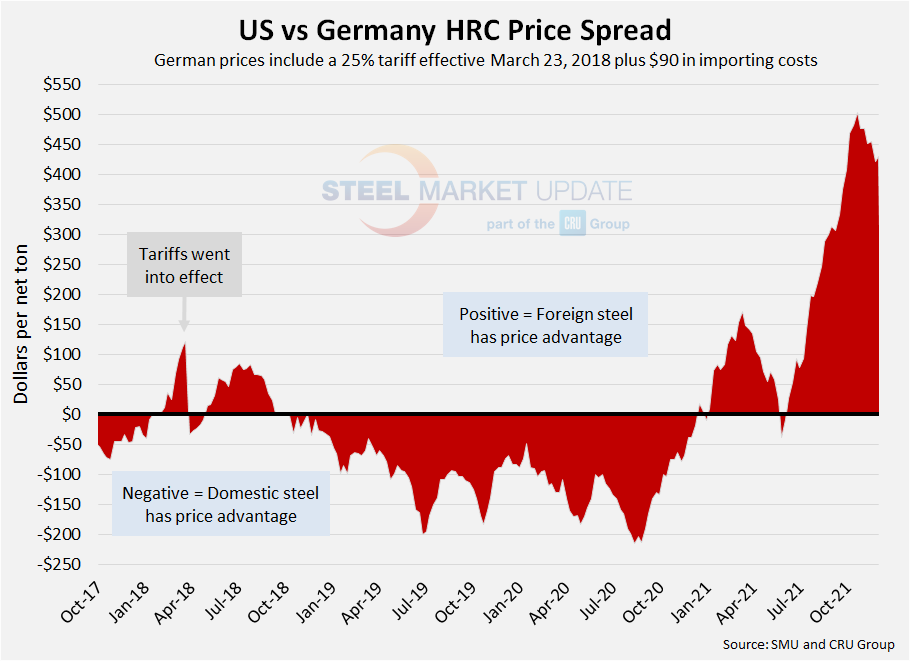
The graph below compares all four price indices and highlights the effective date of the tariffs. Foreign prices are referred to as “equalized,” meaning they have been adjusted to include tariffs and importing costs for a like-for-like comparison against the U.S. price.
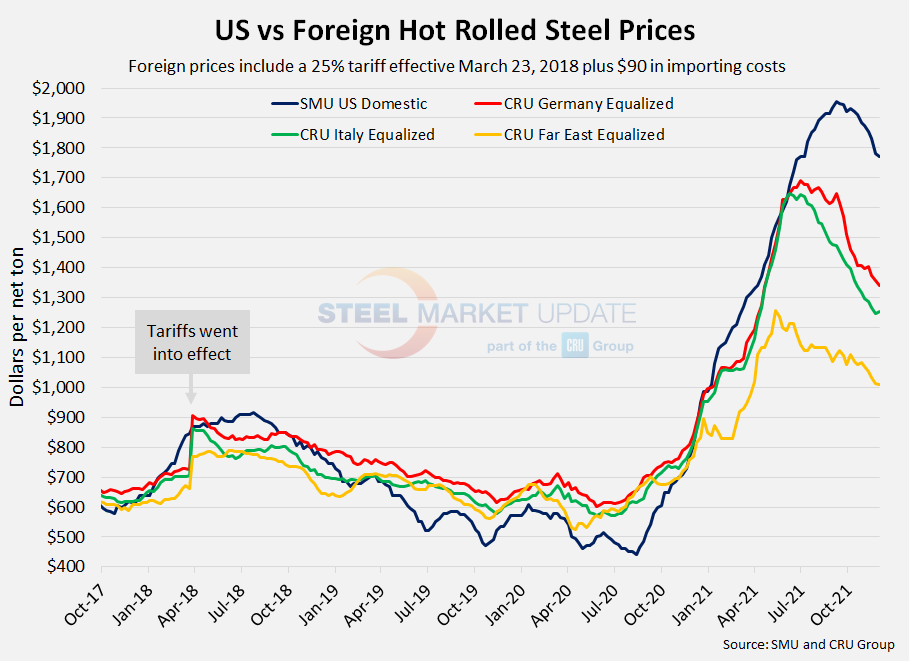
Note: Freight is an important part of the final determination on whether to import foreign steel or buy from a domestic mill supplier. Domestic prices are referenced as FOB the producing mill, while foreign prices are FOB the Port (Houston, NOLA, Savannah, Los Angeles, Camden, etc.). Inland freight, from either a domestic mill or from the port, can dramatically impact the competitiveness of both domestic and foreign steel. When considering lead times, a buyer must take into consideration the momentum of pricing both domestically and in the world markets. In most circumstances (but not all), domestic steel will deliver faster than foreign steel ordered on the same day.
By Brett Linton, Brett@SteelMarkeUpdate.com

Brett Linton
Read more from Brett LintonLatest in International Steel Prices

Higher US CR prices inch closer to EU, Japanese tags
US cold-rolled (CR) coil prices continued to tick higher this week, while offshore markets were mixed.

Stacked S232 keeps US HR prices below EU
US hot-rolled coil prices crept up again this week but still trail imports from Europe.

Doubled S232 lifts EU, Japanese CR prices over US tags
US cold-rolled (CR) coil prices edged up again this week, and most offshore markets moved in the opposite direction. But the diverging price moves stateside vs. abroad did little to impact pricing trends. The bigger impact was from Section 232, which were doubled to 50% as of June 3. The higher tariffs have resulted in […]

CRU: Sheet demand remains weak, tariff changes again alter markets
Subdued demand has continued to weigh on steel sheet prices globally.
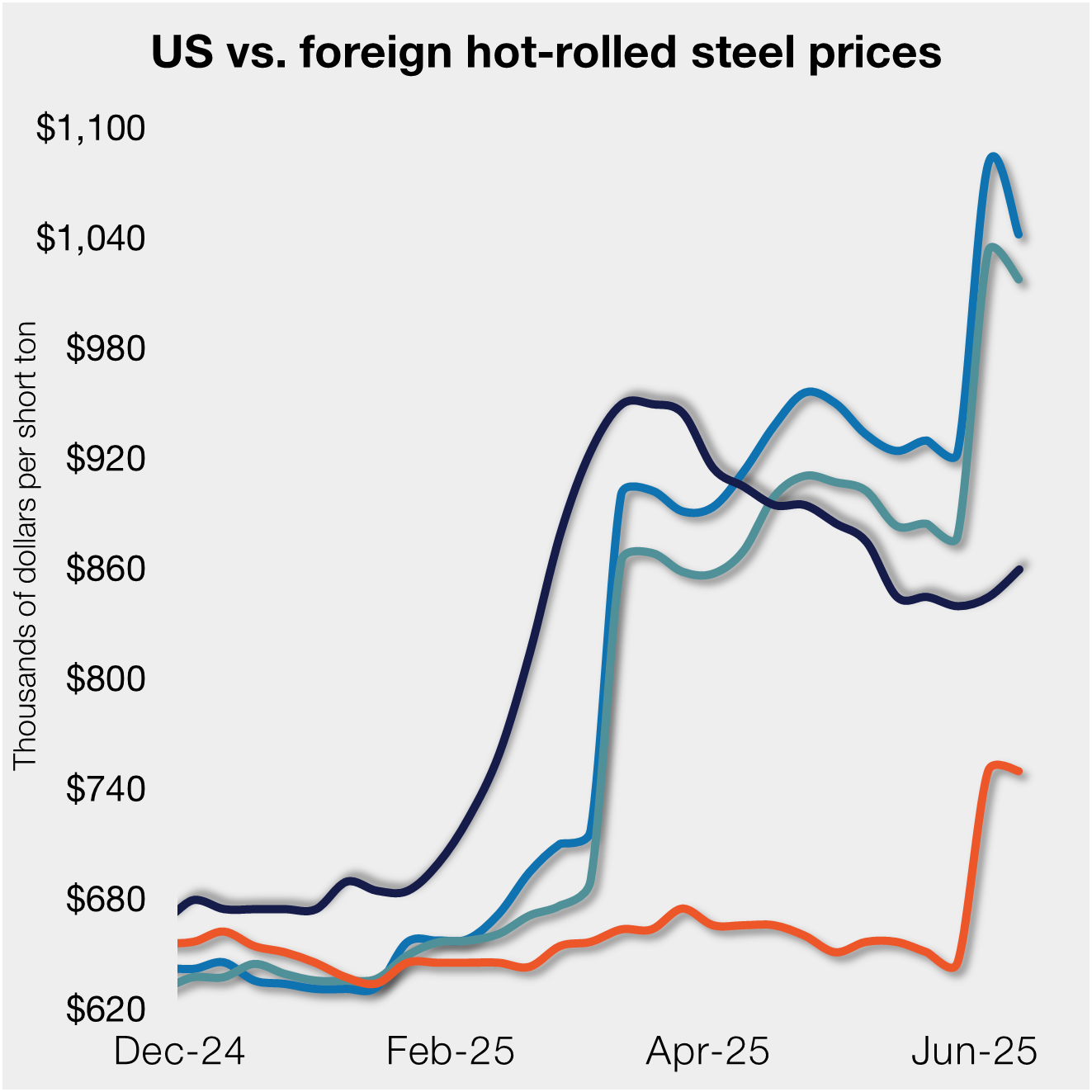
Higher S232 keeps US HR prices at a discount to EU
Domestic hot-rolled (HR) coil prices edged up marginally again this week, while offshore prices ticked down.
